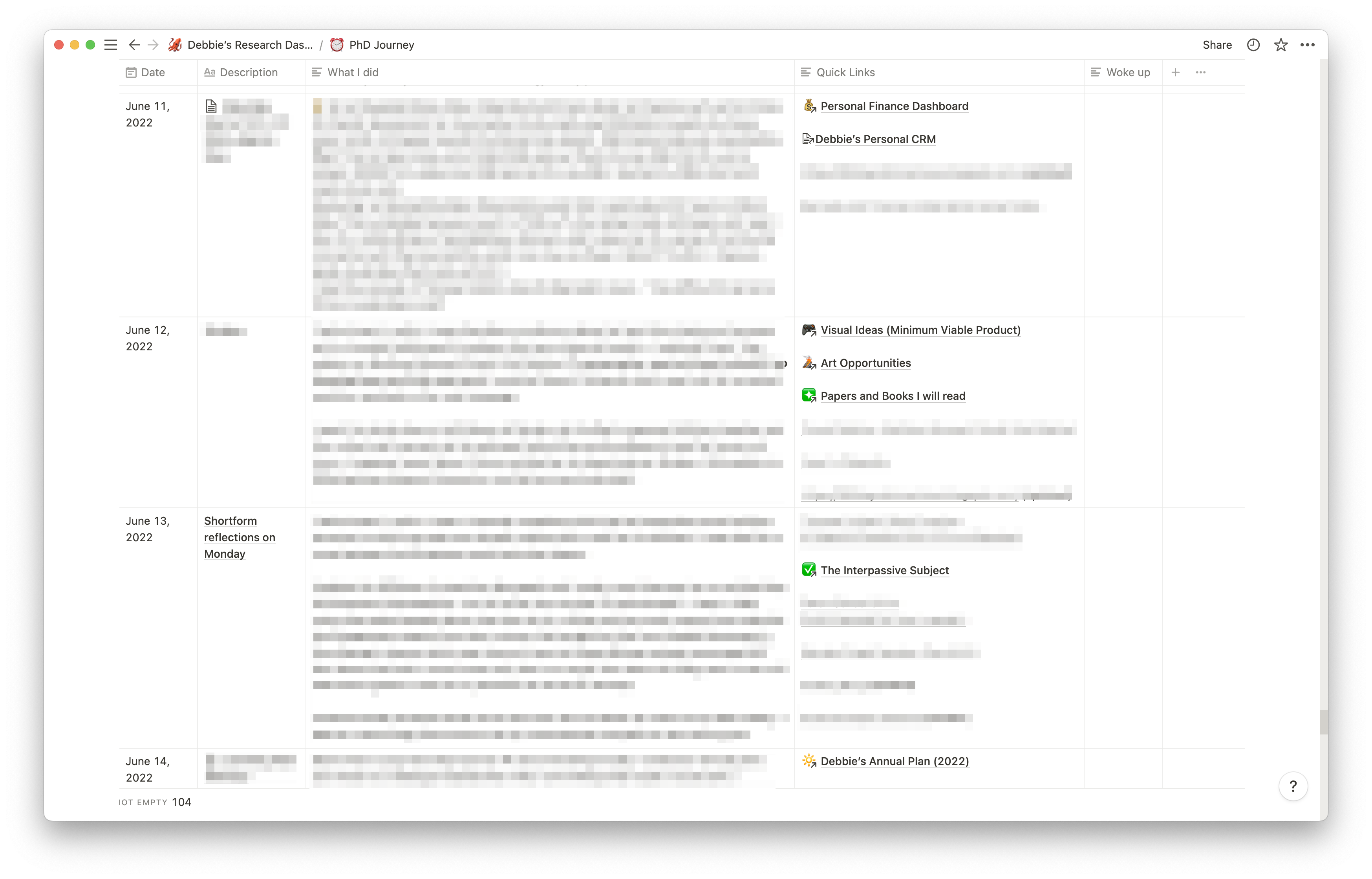
Meta-Reading: Does interpassivity explain why I often end up reading books about Productivity and Lean Methodology instead of reading books about art, culture and actual literature in my free time?
debbie ding
- 0
- 116
Now I know that this was supposed to be a blog for my PhD Research where I ought to be writing about how I am enjoying going through my personal digital library and spreadsheet of the papers and books I’m going to read for my PhD.
But besides my main “Reading” list that is pertaining to my PhD research, I also have another self-designated reading list which I like to call my “Meta-Readings”. These readings include lots of non-fiction books about functional topics like career development, research methodologies, productivity methods, project management, time management, and entrepreneurship. Yes, reader, you may be surprised to learn that the artist Debbie Ding is actually a big sucker for popular productivity self-help books and is no stranger to the design-thinking-lean-methodology-entrepreneurial book category.

When I look at the language used in the books on my “Reading list” and compare them to the language used in the reads on my “Meta-Reading list”, some of the more “far-out” ones make me feel like I’m forced to code-switch from being an artist to being a designer. It is actually in the same way that I feel as a code-switching Singaporean who has lived abroad for some time. Code-switching is such a Singaporean thing, as we navigate different multilingual and dialect and Singlish contexts. Oh help me! Feel the embarassment and hot shame of inexplicably and involuntarily changing accents depending on who you are speaking to! I don’t even know who I am anymore!

I suppose that because my undergraduate degree was in English Literature, so it still remains as my ‘villain origin story’. I will go to the library’s fiction section or literature section and I will seize upon something patently ridiculous like Bolano’s 2666 and solemnly declare to all around me: “I HAVE DECIDED THAT I WILL FINALLY READ THIS EPIC NOVEL!!! LIKE THE OLD TIMES!” (my toxic trait is that for a moment I will truly believe it too)
But of course what will actually happen in reality is that the epic 900+ page long 2666 novel will sit largely unread on the bookshelf and then for some reason I will also borrow another stack of random reads that look more like this:

I still don’t feel natively like a designer. I feel like a writer who was very good at pretending to be an artist who also simultaneously pretended to be a designer. Yeah, I did go to design school in my late 20s (and I did go to RCA, no less), but that was already after I had worked for several years. Before that point, I always said that my “design school” had been “working in the industry”, because I taught myself how to use Photoshop, Illustrator, Flash and front-end development and then just ended up working some fairly menial design jobs along the way Some of them were the kinds of job where the Creative Director got replaced with Traffic because quantity was valued over quality. But the speed and quantity I was forced to produce the work at was my “design school”. I chose to work in design and design education was because I found that it was a logical way to make a good living in the creative industries -alongside the financial precarity of being an artist.
Like i said, the kinds of reads you get as a designer are totally different to that of the reads of an artist. One of the jobs I had worked at had a little book club and I remember reading random design-startup-techy things like “The Actionscript Bible”, “Advanced Web Metrics with Google Analytics” (hehe you might be thinking, what kind book club was this again?), and Seth Godin’s The Dip.
I still recommend The Dip to my students today when they start learning software that is hard to learn, like Blender or Unity, and ever since then, I also continue to read very many not-very-literary books in the productivity/design/UX/lean/agile side of things. I didn’t encounter them as a “canon” of must-read books, nor did I build up a foundation like I have with a formal education in Literature (which entailed systematically reading 17, 18, 19th century British Literature, World Literature, Asian American Literature, Postcolonial Literature, Singapore Literature, etc…). Instead, the words like “Agile” and “MVP” have entered my everyday working vocabulary because of practical work experience, because people at work use similar words. How did we all end up using this language though? Was it through a hit list of “popular top books for UX designers” that was probably scraped off someone’s SEO blog, or did Eric Ries’ “Lean Startup” percolate through offices by word of mouth, championed by various workplace productivity advocates?
I guess the point though that I am trying to make here relates back to interpassivity. As a (former) student of Literature with a supposed fondness for poetry and the written word, I yearn to read novels and long form narrative and poetry that I somehow believe will enrich my soul and imagination. But there is also something unbearable about being directly confronted or transfixed by the object of fascination. I want to read the novel, yet if I am honest with myself, I think I might also trying to avoid it? HELP! And then this leads me to INSTEAD read, well, all these popularly recommended short functional reads about design thinking and lean methodology and MVP and productivity. No offence to Lean Startup book, I love the concept of the MVP and the notion of completion-centric planning has helped me complete lots of projects! But to compare the Lean Startup book to say, Paul Scheerbart’s Lesabendio, it would be like comparing apples and dragonfruits.

